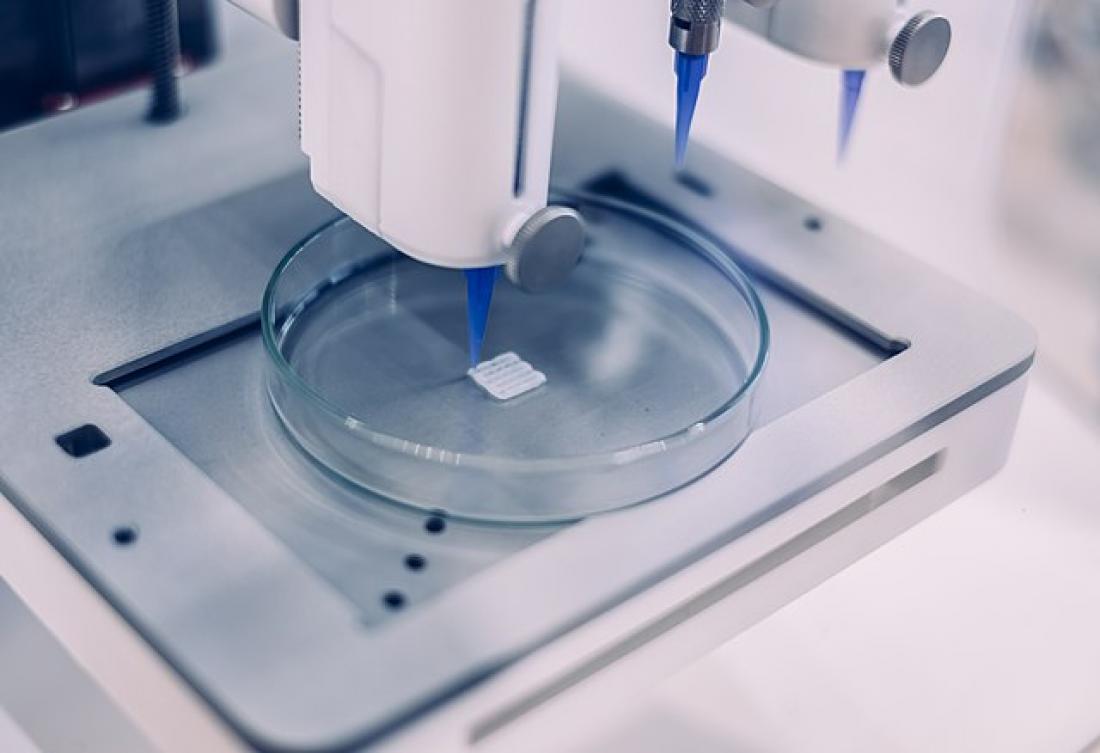“Bioprinting uses cells, proteins and biomaterials as building blocks to 3D printed biological models, biological systems and therapeutic products," says guest editor Professor Wei Sun from Drexel University, USA, and Tsinghua University, China. [Image added by Asia Research News]
Published today in IOP Publishing’s Biofabrication, leading researchers define the status, challenges and opportunities in the field, and forecast the required advances in science & technology to overcome the challenges to a range of bioprinting techniques and applications.
In the roadmap:
· Professor Binil Starly charts the progress from cell expansion to 3D cell printing
· Dr Andrew C. Daly, Professor Jürgen Groll, and Professor Jason A. Burdick examine the developments and challenges in the bioinks used for bioprinting
· Gregor Skeldon and Professor Wenmiao Shu look at the bioprinting of stem cells
· Dr Jinah Jang and Dr Dong-Woo Cho present a strategy for bioprinting of tissue vascular system and tissue assembly
· Dr Minghao Nie and Professor Shoji Takeuchi examine the potential for using 3D-printed biohybrid tissues as in-vitro biological models for studying disease
· Dr Serge Ostrovidov and Professor Ali Khademhosseini examine how 3D bioprinting can be used for the development of organs-on-a-chip
· Professor Roger D. Kamm covers the biomanufacturing of multi-cellular engineered living systems
· Dr Vladimir Mironov and Professor Lorenzo Moroni explore how researchers are pushing boundaries with bioprinting in space
· Professor Ibrahim T. Ozbolat examines the developments of bioprinting technologies
Introducing the collection, guest editor Professor Wei Sun, from Drexel University, Philadelphia, USA and Tsinghua University, Beijing, China, said: “Cells are nature’s building blocks. Bioprinting uses cells, proteins and biomaterials as building blocks to 3D printed biological models, biological systems and therapeutic products.
“It has rapidly evolved into printing biomaterials for tissue scaffolds and implants, printing cells or organoids for 3D biological models, and printing micro-organ-chips for micro-physiological platforms and engineered living systems, such as cellular machining and biorobots.
“There are a number of challenges to overcome, including: the need for a new generation of novel bioinks with multi-functional properties to better transport, protect and grow cells during and after printing; better printing processes and printers to deliver cells with high survivability and high precision; efficient and effective crosslinking techniques and crosslinkers to maintain the structure integrity and stability after printing; integration with micro-fluidic devices to provide a long term and a simulated physiological environment to culture printed models.
“Due to the rapid advancements in bioprinting techniques and their wide-ranging applications, the direction in which the field should advance is still evolving. The roadmap aims to address this unmet need by providing a comprehensive summary and recommendations, useful to experienced researchers and newcomers to the field alike.”
ENDS
Paper
https://doi.org/10.1088/1758-5090/ab5158
Contact
For an advance copy of the paper, further information, or spokesperson contact details, please contact Simon Davies, Senior PR Officer Tel +44 (0)117 930 1110 or +44 (0)7720 496 716
Email [email protected]
About Biofabrication
Biofabrication focuses on cutting-edge research regarding the use of cells, proteins, biological materials and biomaterials as building blocks to manufacture biological systems and/or therapeutic products.
About IOP Publishing
IOP Publishing provides publications through which leading-edge scientific research is distributed worldwide. IOP Publishing is central to the Institute of Physics, a not-for-profit society. Any financial surplus earned by IOP Publishing goes to support science through the activities of the Institute. Go to http://ioppublishing.org or follow us @IOPPublishing.



